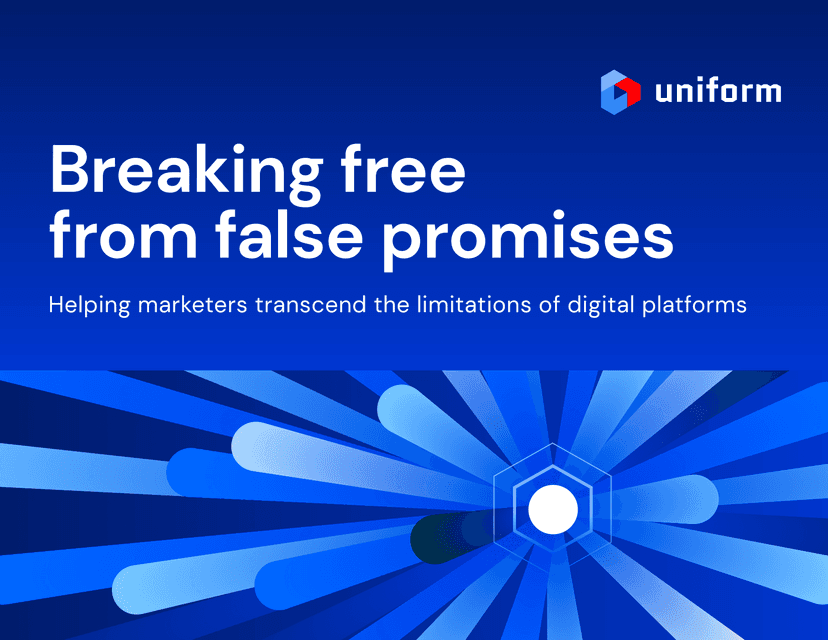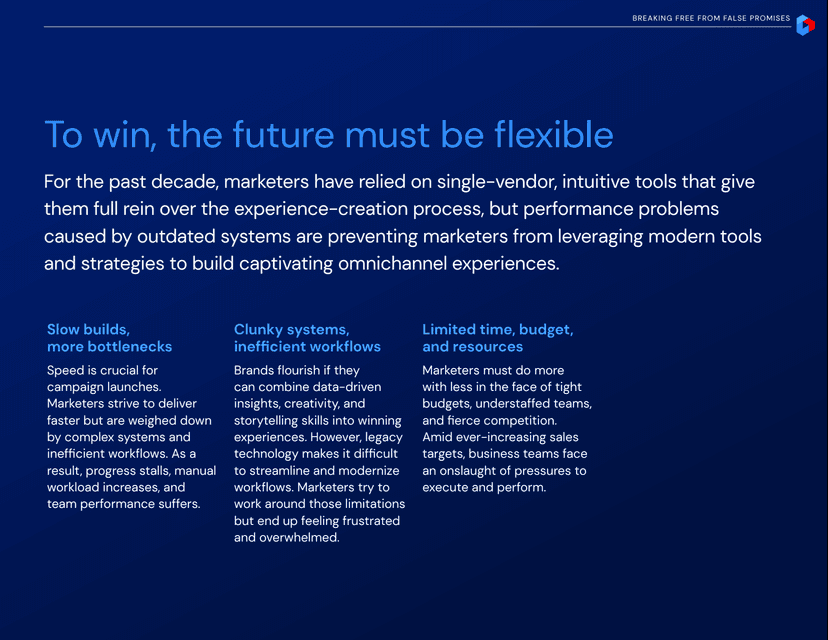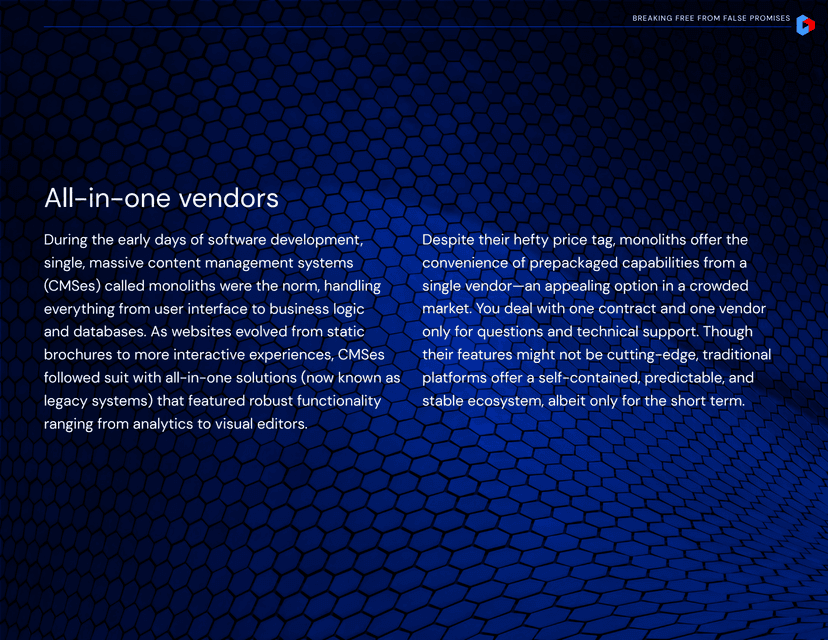Platform
Learn
Company
WHITEPAPER
For years we've relied on massive, single-vendor content-management systems (CMSes) and hailed their convenience. However, as the digital landscape evolved, those monoliths are showing their age, becoming more of a hindrance than a help due to their inflexibility, vendor lock-in, and barricades against innovation. Brands now find those systems hard to maintain and scale, let alone costly to upgrade. A new era of consumer-demand-driven, flexible, and fast digital architecture is on the rise, and it looks like the future of marketing.
Key takeaways
Thank you for your interest!
If you'd like to learn more, request a demo of Uniform Composable DXP




One
To win, the future must be flexible
Two
All-in-one vendors
Three
The failed promise of all-in-one solutions
Four
Navigating the digital-experience architecture landscape
Five
Headless versus composable: What’s the difference?
Six
Composed doesn’t equal composable
Seven
Why composable is the way forward
Eight
Visual workspace delivers next-generation consumer experiences
Nine
Benefits of visual workspaces